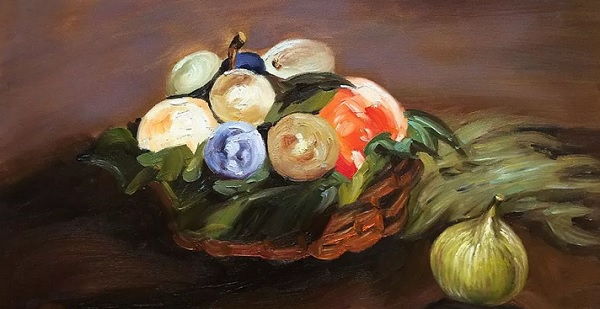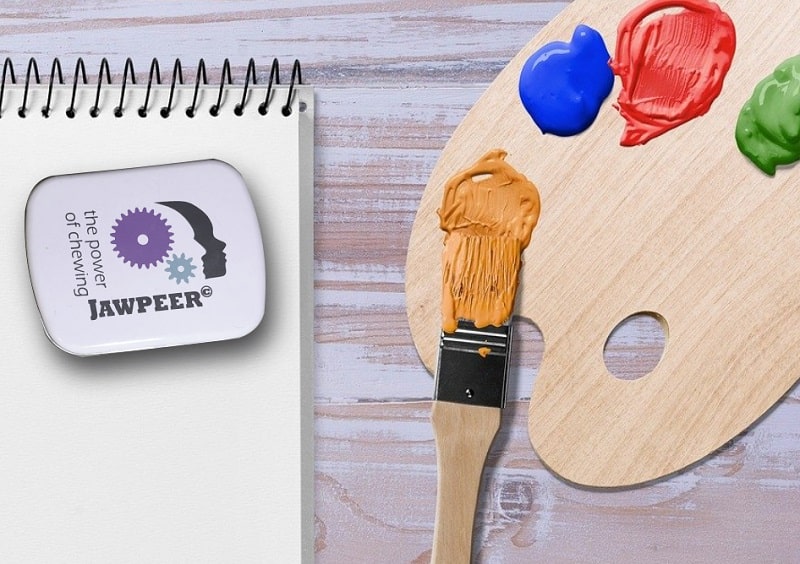
What is elastic chewing gum? Art? Fashion? Elastic chewing gum is best understood against the background of science and art. What distinguishes art from other objects is that art has no instrumental benefit. You can have fruits in a beautiful bowl, but a beautiful painting of a bowl is just beautiful. Art creates an experience that satisfies the brain via one or more senses. Just as elastic chewing gum does.
How Modernism Emerged
Visual art was often about portraying. The more similar, the better the image. Skilled artists earned their living by painting rich and powerful people. When the camera was invented in the 19th century, it became a crisis. The artists could not compete with the camera in depicting reality. Therefore, the painters took another attitude: Why paint something that already exists? Modern art paints something NEW, never seen before. For modern painters, the empty, rectangular canvas is a challenge: If you can create something that is not like any previous paintings, you have proven that you’re a modern artist.
The Arts Resembles the Science
Modern art is closely related to science. In science, the NEW is also interesting. If two people discover the same thing, the one who first publishes the results gets the credit. Competition makes science develop faster due to the search for new knowledge. New art or science defines in relation to the existing. As a living tree, there is an upward striving to new heights. The new discoveries or trends take place at the top. Anyone who wants to contribute to the development must stand on the shoulder of the Giants.
Modern Art Escapes From the Frame
In the mid 20th century, the possibilities of the canvas were almost exhausted. Everything that could be done on a white canvas was done. Then modern art exceeded its limits and became Conceptual Art. Conceptual Art is based on the claim that the idea behind it is the essence of Art. Thus, art resembles science. Science is based on ideas or theories as they are called. Artists and Researchers constantly test new ideas. The idea serves as a recipe for the experiment. Conceptual art does not have to be a painting. It can just as easily be a pop song, a urinal, or elastic chewing gum. Mass media gave Pop Art a huge impact. The marriage between John Lennon and the conceptual artist Yoko Ono reflected the relationship. Modern art was married to pop culture in the ’60s.

Elastic Chewing Gum Pop at a New Stage
Art is constantly evolving into new areas. What remains is to make art that stimulates other senses than eyes and ears; smell, taste and feel. These three senses unite in the mouth, a very complex and over 600 million years old organ. Elastic chewing gum is conceptual art for oral stimulation. In terms of art history, the products relate to sculptures of elastic material that many contemporary artists work with. Plastic chewing gum became a part of popular culture. Elastic Chewing Gum is more of contemporary pop art. The vision is to become somewhat of a pop star on the oral stage.
Why Elastic Chewing Gum Arose
Silicone was first isolated by the Swedish chemist Berzelius in 1823. In WWI the US Army sent plastic chewing gum to soldiers in service to keep their humor up. We knew the stimulating effects of chewing gum long ago. Elastic chewing gum could have originated at least 100 years ago, so why not until now? Probably because plastic chewing gums are cheap and the physical effects of chewing were unknown. At that time, it was not known that harder chewing resistance greater affected the brain.
Elastic Chewing Gum Built on Science
New DNA analyzes show that chewing gum has been around for at least 10,000 years. Why do people like to chew? MR-scanners made it possible to examine the brain without surgery. Recently, Asian researchers mapped how chewing affects brain activity. The research shows that chewing stimulates the brain’s reward system, among other things. The more we chew, the greater the effect. At the same time, today’s lack of chewing resistance in food has negative effects. Evolutionary scientists claim that humans had better teeth and chewed more in the past. We have problems with the teeth, breathing, and posture because we chew too little. Elastic chewing gum promotes healthy chewing habits. Habits that disappeared with our modern lifestyle.
Elastic Chewing Gum Better for the Environment
The most important environment for a human being is the own brain, especially the central parts. The same parts of the brain also stimulate through cold baths and breathing exercises. Not only the central brain benefit from elastic chewing gum but also the external environment. This is because of reuse and recycling. Plastic chewing gum developed in a time when no one took care of the environment. Countless birds and fish suffocated by plastic chewing gum. Disposable product was a recipe for financial success. They resulted in greater sales and thus higher profits. Plastic chewing gum is also sticky and a difficult piece of rubbish to remove. Elastic chewing gums provide greater chewing resistance. In conclusion, elastic chewing gum arose as a state of art to stimulate oral sensations and help protect the environment.